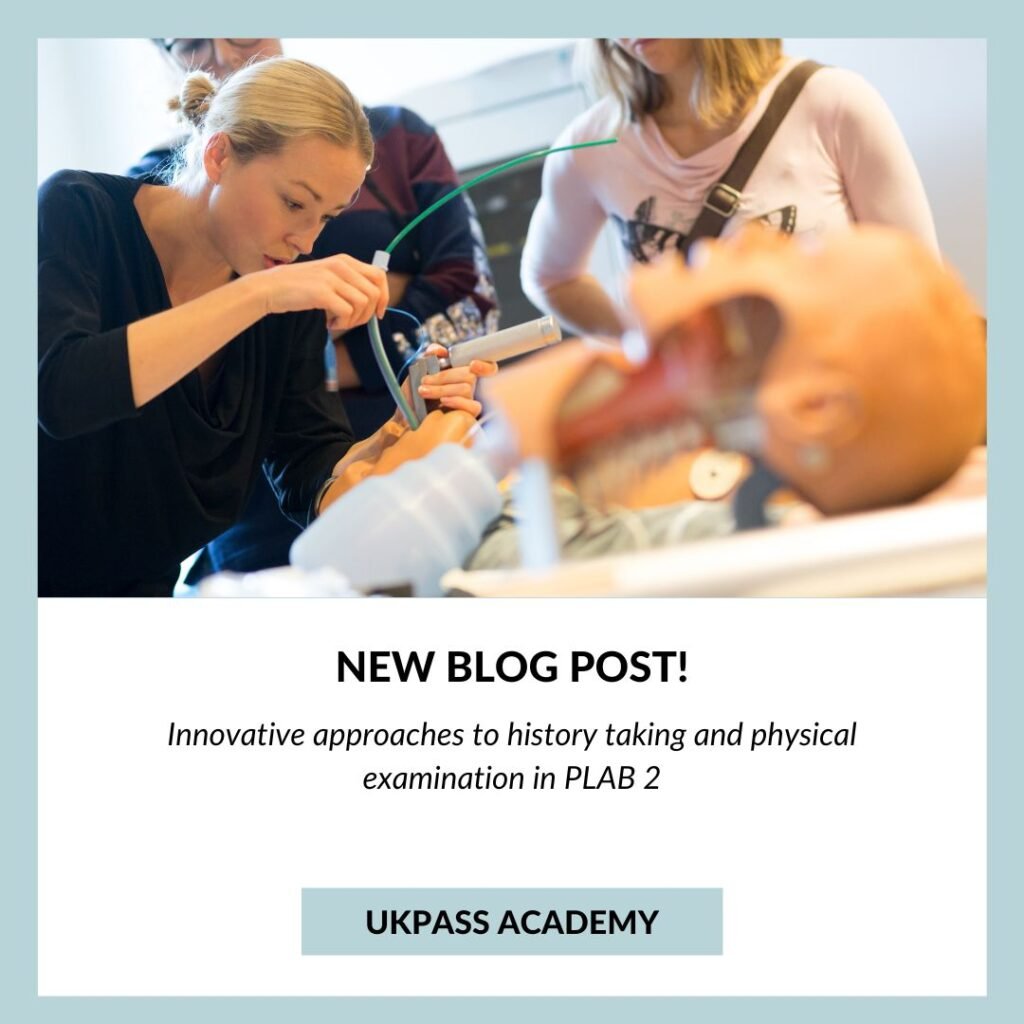Innovative Approaches to History Taking and Physical Examination in PLAB 2
PLAB 2 is a crucial examination for international medical graduates seeking to practice medicine in the United Kingdom. One of the key components of this exam is the history taking and physical examination station. In recent years, there have been several innovative approaches to enhance the effectiveness and efficiency of this station. In this blog post, we will explore some of these approaches and their benefits.
1. Role-Play Scenarios
Traditionally, PLAB 2 stations involved standardized patients who would present with specific symptoms or medical conditions. However, there has been a shift towards incorporating role-play scenarios in the history taking and physical examination stations. In these scenarios, the candidate plays the role of the doctor, while an examiner or another candidate assumes the role of the patient.
This approach allows candidates to experience a more realistic interaction, simulating the dynamics of a doctor-patient relationship. It helps in developing communication skills, empathy, and the ability to establish rapport with patients. Role-play scenarios also provide an opportunity to practice handling challenging situations or difficult patients, which is invaluable in real-life clinical practice.
2. Objective Structured Clinical Examination (OSCE) Stations
The OSCE format has gained popularity in medical examinations worldwide, including PLAB 2. In OSCE stations, candidates rotate through a series of timed stations, each focusing on a different aspect of history taking and physical examination. These stations may involve real patients or simulated scenarios.
OSCE stations provide a structured and standardized approach to evaluating candidates’ skills. They ensure that all candidates are assessed on the same set of tasks, allowing for fair and objective evaluation. The use of OSCE stations also promotes the development of clinical reasoning and decision-making skills, as candidates are required to interpret findings and formulate appropriate management plans.
3. Simulation-Based Stations
Simulation-based stations have revolutionized medical education and assessment. In PLAB 2 course, simulation-based stations are used to replicate real-life clinical scenarios, allowing candidates to demonstrate their history taking and physical examination skills in a controlled environment.
These stations often utilize high-fidelity mannequins or simulated patients, which can mimic various symptoms and physical findings. Candidates are required to gather a comprehensive history, perform a systematic physical examination, and interpret the simulated patient’s responses or findings.
The use of simulation-based stations provides a safe and realistic learning experience. It allows candidates to practice their skills, receive immediate feedback, and identify areas for improvement. Simulation-based stations also promote the integration of clinical knowledge with practical skills, enhancing the overall competence of candidates.
Conclusion
The innovative approaches to history taking and physical examination in PLAB 2 have significantly enhanced the assessment process for international medical graduates. The incorporation of role-play scenarios, OSCE stations, and simulation-based stations has provided candidates with more realistic and comprehensive evaluation opportunities.
These approaches not only assess candidates’ clinical skills but also promote the development of effective communication, empathy, and clinical reasoning abilities. They prepare candidates for the challenges they will face in real-life clinical practice, ensuring that they are well-equipped to provide quality healthcare to patients in the United Kingdom.
As PLAB 2 continues to evolve, these innovative approaches will continue to play a vital role in shaping the examination process and ensuring the competency of international medical graduates.

